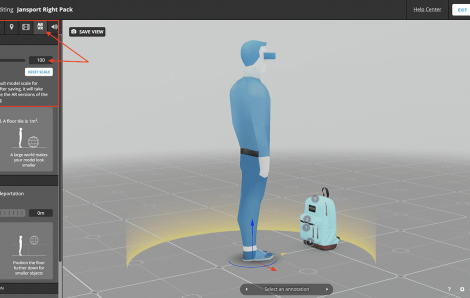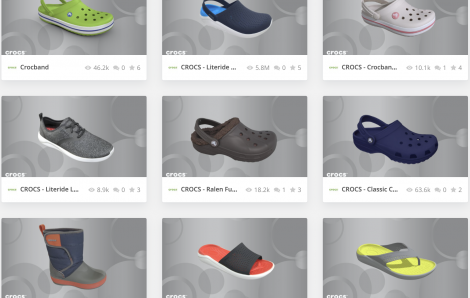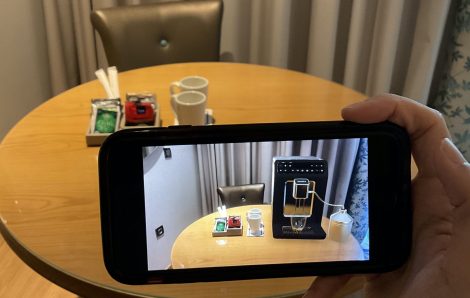3D is the Backbone of Any Immersive Strategy
As we grow Sketchfab into the leading 3D content and visualisation platform on the internet, we talk with a lot of companies. We pitch them on how they can use Sketchfab and use our player to showcase products and experiences in 3D, anywhere online.
Quite often the answer we get is that they want to invest in immersive computing, but they’d rather build VR or AR applications than start with 3D online. Which led me to this post, with a goal to explain how — in my humble, and certainly biased opinion — 3D is the precursor of any immersive strategy.
Weight of the World, an immersive experience recently published on Sketchfab
The VR & AR excitement
Over the past 4 years, there has been a lot of excitement around Virtual Reality and then Augmented Reality, explaining why we hear brands thinking about investing in VR before investing in 3D.
The excitement was triggered by the acquisition of Oculus by Facebook for $2bn in 2014. All of a sudden, every brand wanted to figure out their VR strategy, and started spending significant resources on it. The AR excitement followed, driven by things like ARkit, ARCore, and the massive funding of Magic Leap. The AR headset company — they just shipped V1 — has raised over $2bn in funding, making it the most funded pre-launch startup ever.
A lot of the VR and AR you see is actually 2D or 3DOF
Actual VR content is difficult to produce and, as a result, many brands have opted for cheap VR or AR, in the form of 360 or even 2D content. 360 content is essentially traditional 2D content, mapped on a sphere to make it look like VR content. I often see references to “360 3D” content, which doesn’t make a lot of sense.
The same thing is happening with AR, with Pokémon Go style implementations, and 2D content layered over a 3D scene. A number of headsets — typically mobile-powered VR — are actually unable to support more than 360 content.
They only support 3 degrees of freedom (3DOF), making the experience quite far from matching reality. Even a number of experiences for full desktop VR systems don’t leverage positional tracking and are just based on a 2D medium.
Theoretically VR sounds very promising, but it is hard to do well, so people tend to jump on mediocre implementations. The result is often disappointing for end users, especially if it’s their first VR experience.
To do proper VR or AR, you need 3D
VR and AR’s reason to exist is to provide what I call volumetric support. Others call it spatial computing, or 6 degrees of freedom. Whatever you call it, it starts with a 3 dimensional scene or object.
The reason is quite simple: we live in a 3D world, and reality is 3D. In order to live up to their missions, so should Virtual and Augmented Reality. Even if often used for 2D/3DOF content production, the tools to make VR and AR are pretty much all 3D software: Unity, Unreal, Substance, AR Studio, Lens Studio…
Liopleurodon, our first model to pass 10M views
Using 3D on the web gives you a 100x larger reach
If you look at VR, the headset distribution is still pretty small. If you look at Mobile AR, you need the iPhone 6s or above, or a recent Android, so say 500M units.
When it comes to 3D on the web, thanks to technologies like WebGL — and platforms like Sketchfab — we are able to reach anyone, anywhere, on any browser, any operating system, with any device.
We actually just passed 1,000,000,000 pageviews on Sketchfab, the largest reach when it comes to interactive 3D content online. 3D on the web is an inherently interactive medium, providing much more immersiveness than images or videos.
Just look at the embed at the beginning of this post. It’s not as immersive as “true” VR or AR, of course, but given its reach, that is a worthwhile tradeoff. This goes beyond standard reach on the regular web.
We’ve actually partnered with pretty much all publishing platforms out there to let you embed and consume Sketchfab content right where you are discovering it. We are directly supported in Facebook, Twitter, WordPress, Reddit, Kickstarter… you name it, making the reach even greater than just technically speaking.
VR and AR are the future of 3D
Don’t get me wrong, I’m a huge believer in the potential of VR and AR. 3D consumed on a 2D screen is definitely not as immersive or as compelling as true VR/AR. You are using a mouse, touchpad, or touch screen to navigate the content, whereas with VR & AR you don’t just experience the content, you are inside the scene. The good news is that Sketchfab already supports VR and AR out of the box. ?
Thanks to WebVR, any model you publish on Sketchfab is viewable on any VR headset, without having to build a native app for each platform. And, thanks to ARKit and ARCore, every model published on Sketchfab is immediately viewable in AR on iOS or Android.
In a nutshell, good 3D on the web is very often a better option than cheap VR/AR: better quality, larger reach. And of course ideally you’d want the reach of 3D on the web, and the immersion of good VR & AR. We are working on improving both VR and AR support, and also looking at native pipelines and integrations.
Our download API means you can easily bring Sketchfab models within native applications. The other good news is that on the hardware side, we are finally getting into untethered 6DOF headsets like Oculus Quest or Vive Focus. Consumer-grade devices able to fully support volumetric content. Onwards and upwards, to an immersive future combining 3D, VR and AR!





